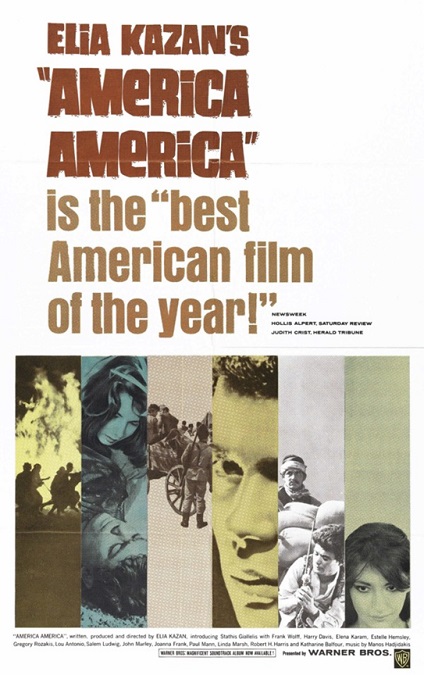
America, America – 1963
This wasn’t a bad movie. It wasn’t really my kind of film to watch, but it certainly was entertaining. It was directed by Elia Kazan, and was loosely based on the life of his uncle. It followed the character of Stavros Topouzoglou, a young Greek boy living in poverty near the base of Mount Argaeus in Turkish Anatolia. In the late 1890s, the Greeks and the Armenians of the region were brutally oppressed by the Turks that occupied the land.
Stavros was played by a handsome young actor named Stathis Giallelis. It was his first film role ever, and he had to study English for nearly 18 months in preparation for the part. But he did a phenomenal job. His acting ability was astonishing and his emotional presence was powerful. Kazan really cast the perfect person in the film’s lead.
Stavros has big dreams of getting out of his home, out from under the oppressive thumb of the Turks, and away from the influences of his family. He wants to make something of his life on his own terms. More than anything else, he wants to go to America, the land where you get to make a fresh start and be the master of your own destiny.
In one of the most heartbreaking sequences of the film, his family gathers together everything of value they have and give it to him. They send him off to the big city of Constantinople to work for his uncle. Once there, he is charged with earning enough money to slowly bring his family, one by one, to the city. It is their plan to save the family from their extreme poverty. But along the way, before he even reaches Constantinople, he becomes the victim of the despicable thief, Abdul, played by Lou Antonio. Abdul cheats him out of all of his money and possessions. And what’s worse, he is forced to murder Abdul to save his own life. He arrives in Constantinople penniless. It makes you want to weep for him.
He goes to his uncle who had been counting on his family’s money to save his failing business. But rather than a life that would be lived for someone else, he chooses to leave and take his chances on his own. The rest of the film follows the young man as he becomes homeless, does backbreaking work for almost no pay, his brush with death, his return to his uncle, his engagement to a young girl with a wealthy father, and his refusal to become trapped in a life that would deny him his dreams of going to America.
Finally, he buys his ticket to cross the ocean. He has an affair with Sophia Kebabian, a married, wealthy, American woman, played by Kathrine Balfour, and nearly gets himself put on the first boat back to Turkey. It is only through the supreme sacrifice of his tubercular friend Hohannes, played by Gregory Rozakis, that Stavros is able to get through US immigration. Hohannes committed suicide and Stavros took his papers and his name. Once there, he gets a job as a shoeshine boy, and though it takes years, he earns enough money to bring his family to America. One of the relatives he is able to bring is his nephew, Elia Kazan.
The scope of the tale is epic and really delves into themes of independence and freedom: freedom from oppression, and freedom from the demands of the family. The character of Stavros is in almost every single scene of the nearly 3 hour film. He goes through several significant changes and Giallelis handles them all with intense focus and passion. He really was the highlight of the film.
That’s not to say that the rest of the cast didn’t measure up. Stavros’ parents, Isaac and Vasso, played by Harry Davis and Elena Karam, also did a wonderful job. Paul Mann did a great job as Aleko Sinnikoglou, the wealthy father of the homely Thomna, played by Linda Marsh. Marsh was especially good. The scenes in which she begs him to love her are powerful and almost difficult to watch because you know he cannot.
The movie was good and well-made, and if I had any real disappointment, it was that it was filmed in black-and-white. This was, after all, 1963. Color had been around for over 25 years! Jump on the bandwagon Elia! Embrace the color!
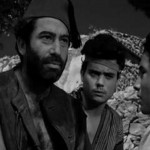
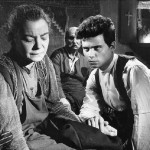

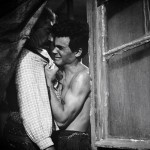

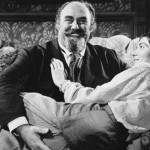

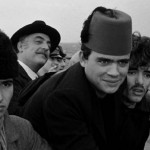
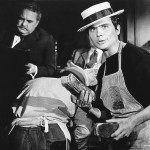
I have recommended the film to all the people in my life and even strangers. I just loved it !!